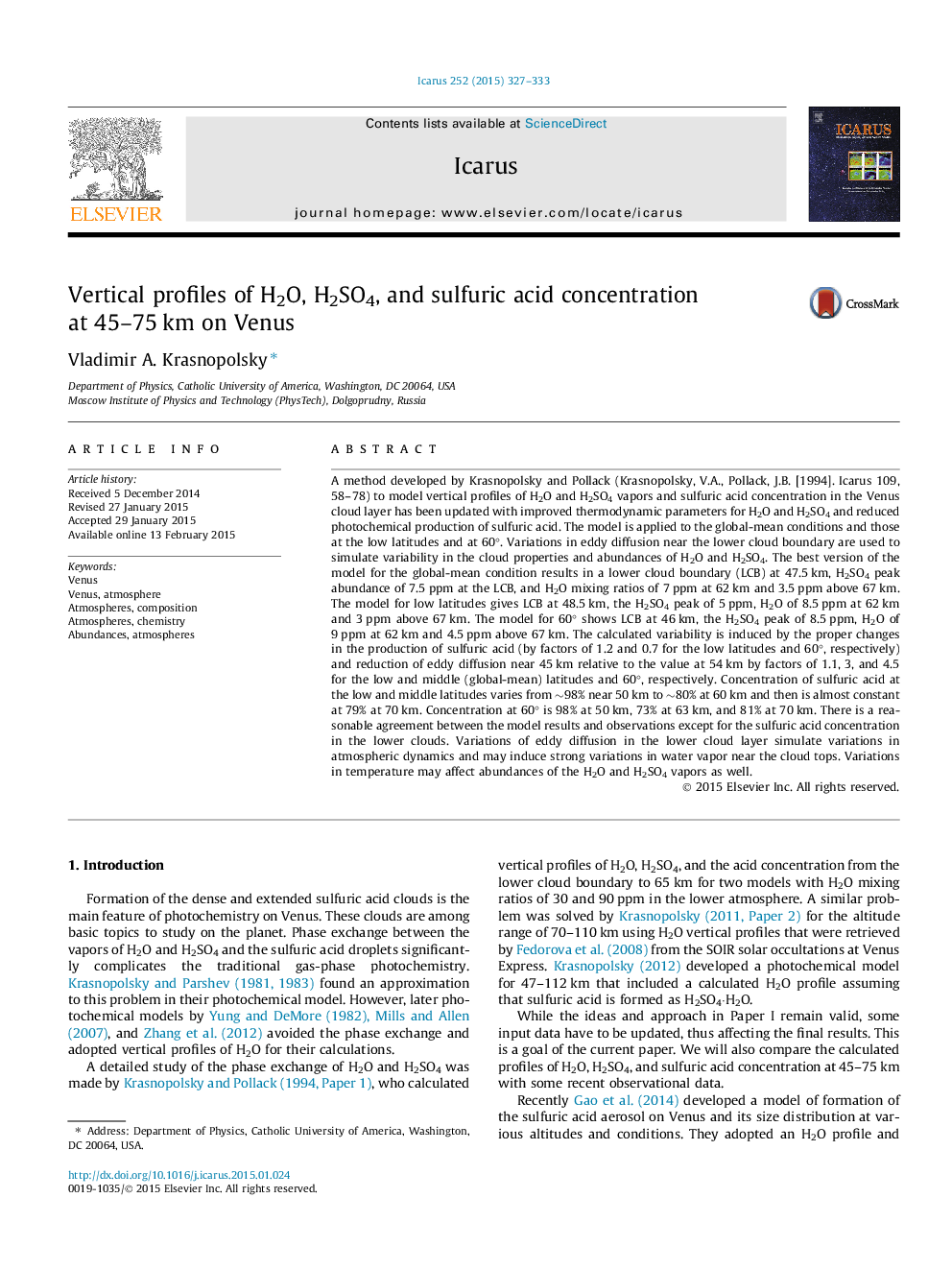| Article ID | Journal | Published Year | Pages | File Type |
|---|---|---|---|---|
| 8136573 | Icarus | 2015 | 7 Pages |
Abstract
A method developed by Krasnopolsky and Pollack (Krasnopolsky, V.A., Pollack, J.B. [1994]. Icarus 109, 58-78) to model vertical profiles of H2O and H2SO4 vapors and sulfuric acid concentration in the Venus cloud layer has been updated with improved thermodynamic parameters for H2O and H2SO4 and reduced photochemical production of sulfuric acid. The model is applied to the global-mean conditions and those at the low latitudes and at 60°. Variations in eddy diffusion near the lower cloud boundary are used to simulate variability in the cloud properties and abundances of H2O and H2SO4. The best version of the model for the global-mean condition results in a lower cloud boundary (LCB) at 47.5 km, H2SO4 peak abundance of 7.5 ppm at the LCB, and H2O mixing ratios of 7 ppm at 62 km and 3.5 ppm above 67 km. The model for low latitudes gives LCB at 48.5 km, the H2SO4 peak of 5 ppm, H2O of 8.5 ppm at 62 km and 3 ppm above 67 km. The model for 60° shows LCB at 46 km, the H2SO4 peak of 8.5 ppm, H2O of 9 ppm at 62 km and 4.5 ppm above 67 km. The calculated variability is induced by the proper changes in the production of sulfuric acid (by factors of 1.2 and 0.7 for the low latitudes and 60°, respectively) and reduction of eddy diffusion near 45 km relative to the value at 54 km by factors of 1.1, 3, and 4.5 for the low and middle (global-mean) latitudes and 60°, respectively. Concentration of sulfuric acid at the low and middle latitudes varies from â¼98% near 50 km to â¼80% at 60 km and then is almost constant at 79% at 70 km. Concentration at 60° is 98% at 50 km, 73% at 63 km, and 81% at 70 km. There is a reasonable agreement between the model results and observations except for the sulfuric acid concentration in the lower clouds. Variations of eddy diffusion in the lower cloud layer simulate variations in atmospheric dynamics and may induce strong variations in water vapor near the cloud tops. Variations in temperature may affect abundances of the H2O and H2SO4 vapors as well.
Keywords
Related Topics
Physical Sciences and Engineering
Earth and Planetary Sciences
Space and Planetary Science
Authors
Vladimir A. Krasnopolsky,
